1. Optimize On-Page SEO
- Keyword Research: Use tools like Google Keyword Planner, Ahrefs, or SEMrush to find relevant keywords with good search volume and manageable competition.
- Title Tags and Meta Descriptions: Include primary keywords in your title tags and meta descriptions. Keep them compelling and within the character limits (Title: ~60 characters, Meta Description: ~155 characters).
- Header Tags: Use H1, H2, and H3 tags to structure your content and include your keywords naturally.
- Content Quality: Create high-quality, comprehensive, and informative content that answers users’ search queries. Aim for content that is better than what currently ranks in the top spots.
- Image Optimization: Use alt tags with descriptive text that includes keywords where appropriate.
2. Focus on Technical SEO
- Mobile Optimization: Ensure your site is mobile-friendly, as Google prioritizes mobile-first indexing.
- Site Speed: Improve loading times by optimizing images, using a Content Delivery Network (CDN), and minimizing JavaScript and CSS files.
- Secure Site (HTTPS): Use an SSL certificate to ensure your site is secure. Google favors HTTPS sites.
- XML Sitemap: Submit an XML sitemap to Google to help them crawl your site more efficiently.
3. Build High-Quality Backlinks
- Guest Blogging: Write guest posts on reputable sites within your niche to gain backlinks.
- Outreach: Reach out to influencers, bloggers, and webmasters to promote your content and earn backlinks.
- Content Promotion: Share your content across social media and forums to attract links naturally.
4. Create Engaging Content
- Long-Form Content: Content that is more in-depth tends to perform better in search rankings. Aim for well-researched articles that are at least 1,500 words.
- Multimedia Content: Include images, videos, and infographics to make your content more engaging.
- Regular Updates: Keep your content fresh by updating it regularly with new information.
5. Improve User Experience (UX)
- Easy Navigation: Ensure that your site is easy to navigate with clear menus and a logical structure.
- Low Bounce Rate: Provide valuable content to reduce bounce rates. Engaged users signal to Google that your content is relevant.
- Interactive Elements: Use interactive elements like quizzes, polls, and calculators to increase time spent on your site.
6. Leverage Local SEO (if applicable)
- Google My Business: Create and optimize your Google My Business profile with accurate information and keywords.
- Local Citations: Ensure your business is listed in relevant local directories with consistent NAP (Name, Address, Phone) information.
- Reviews: Encourage satisfied customers to leave positive reviews on Google and other review sites.
7. Monitor and Analyze Performance
- Google Search Console: Regularly check Google Search Console for any issues and track your site’s performance.
- Analytics Tools: Use Google Analytics or similar tools to monitor traffic, user behavior, and conversion rates.
- Adjust and Optimize: Continuously refine your strategy based on data insights and changing algorithms.
8. Stay Updated on Google Algorithms
- Algorithm Changes: Keep up with the latest Google algorithm updates and adjust your SEO strategy accordingly.
- SEO Blogs and Forums: Follow SEO industry blogs and participate in forums to stay informed about the latest trends and best practices.
Ranking in the top three positions on Google is not guaranteed, but by following these strategies consistently and adapting to changes in the search landscape, you can significantly improve your chances.
